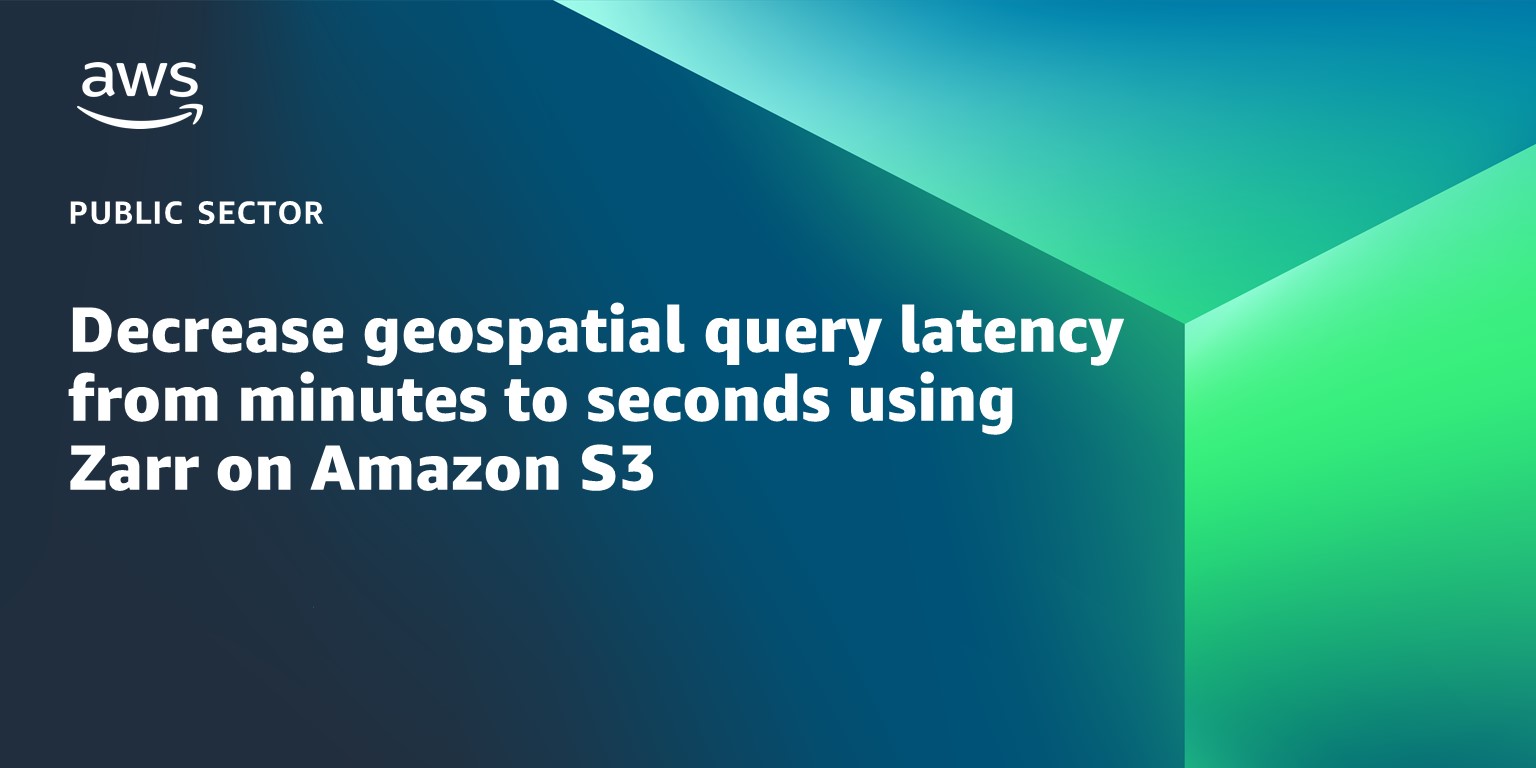AWS Public Sector Blog
Tag: geospatial
Harnessing cloud solutions to tackle water challenges
In this post, we explore how Amazon Web Services (AWS) cloud-based technologies can be used to address diversified and dynamic water challenges in Europe, the Middle East, and Africa. As climate change and demographic shifts continue to strain water resources, the need for innovative, technology-driven solutions has never been more urgent.
Strengthening public safety collaboration with AWS Wickr and the Android Team Awareness Kit
For public safety agencies, secure collaboration and situational awareness are essential to preparedness and response. First responders need secure, uninterrupted communication to help them get oriented quickly and support complex coordination efforts. This post highlights how Amazon Web Services (AWS) secure communication service AWS Wickr integrates with the Android Team Awareness Kit (ATAK) to enhance the efficiency of emergency response with a user-friendly, map-based solution that expands the common operating picture and strengthens cross-team collaboration.
ASTERRA helps build a more sustainable Earth by identifying and mitigating ‘lost water’ using AWS
ASTERRA, an Israel-based geospatial and Earth observation company, uses Amazon Web Services (AWS) to help water utilities and a number of industries identify and mitigate pipeline leaks. ASTERRA uses AWS to derive intelligence and insights from beneath the surface of their largest installations and to bypass the need to break ground and dig for leaks. Read this post to learn how AWS has helped ASTERRA overcome traditional on-premises infrastructure limitations and to accelerate the development of solutions for anticipating and mitigating failures, saving water, energy, and avoiding carbon dioxide (CO2) emissions as a result.
How Government of Canada customers can use AWS to securely migrate data
Learn how AWS Snowcone and Amazon S3 can help Government of Canada (GC) organizations securely transfer and store their data, and how two GC organizations have already used these services to migrate data securely. Find out how these AWS services address data security, privacy, and compliance with regulatory requirements specific to GC customers.
How to store historical geospatial data in AWS for quick retrieval
Learn how to store historical geospatial data, such as weather data, on AWS using Amazon DynamoDB. This approach allows for virtually unlimited amounts of data storage combined with query performance fast enough to support an interactive UI. This approach can also filter by date or by location, and enables time- and cost- efficient querying.
36 new or updated datasets on the Registry of Open Data: AI analysis-ready datasets and more
This quarter, AWS released 36 new or updated datasets. As July 16 is Artificial Intelligence (AI) Appreciation Day, the AWS Open Data team is highlighting three unique datasets that are analysis-ready for AI. What will you build with these datasets?
Decrease geospatial query latency from minutes to seconds using Zarr on Amazon S3
Geospatial data, including many climate and weather datasets, are often released by government and nonprofit organizations in compressed file formats such as the Network Common Data Form (NetCDF) or GRIdded Binary (GRIB). As the complexity and size of geospatial datasets continue to grow, it is more time- and cost-efficient to leave the files in one place, virtually query the data, and download only the subset that is needed locally. Unlike legacy file formats, the cloud-native Zarr format is designed for virtual and efficient access to compressed chunks of data saved in a central location such as Amazon S3. In this walkthrough, learn how to convert NetCDF datasets to Zarr using an Amazon SageMaker notebook and an AWS Fargate cluster and query the resulting Zarr store, reducing the time required for time series queries from minutes to seconds.
33 new or updated datasets on the Registry of Open Data for Earth Day and more
The AWS Open Data Sponsorship Program makes high-value, cloud-optimized datasets publicly available on AWS. Through this program, customers are making over 100PB of high-value, cloud-optimized data available for public use. As April 22 is Earth Day, the AWS Open Data team wanted to highlight some new datasets from our geospatial and environmental communities of practice, as well as the other new or updated datasets available now on the Registry of Open Data on AWS and also discoverable on AWS Data Exchange.
Querying the Daylight OpenStreetMap Distribution with Amazon Athena
In 2020, Meta introduced the Daylight Map Distribution, which combines OpenStreetMap (OSM) data with quality and consistency checks from Daylight mapping partners to create a no-cost, stable, and simple-to-use global map. This blog post provides a brief overview of OSM and Daylight followed by a step-by-step tutorial using five real-world examples. We combine the powerful query capabilities of Amazon Athena from with the feature-rich Daylight OSM data to demonstrate a typical OSM data analysis workflow.
Creating satellite communications data analytics pipelines with AWS serverless technologies
Satellite communications (satcom) networks typically offer a rich set of performance metrics, such as signal-to-noise ratio (SNR) and bandwidth delivered by remote terminals on land, sea, or air. Customers can use performance metrics to detect network and terminal anomalies and identify trends to impact business outcomes. This walkthrough presents an approach using serverless resources from AWS to build satcom control plane analytics pipelines. The presented architecture transforms the data to extract key performance indicators (KPIs) of interest, renders them in business intelligence tools, and applies machine learning (ML) to flag unexpected SNR deviations.









